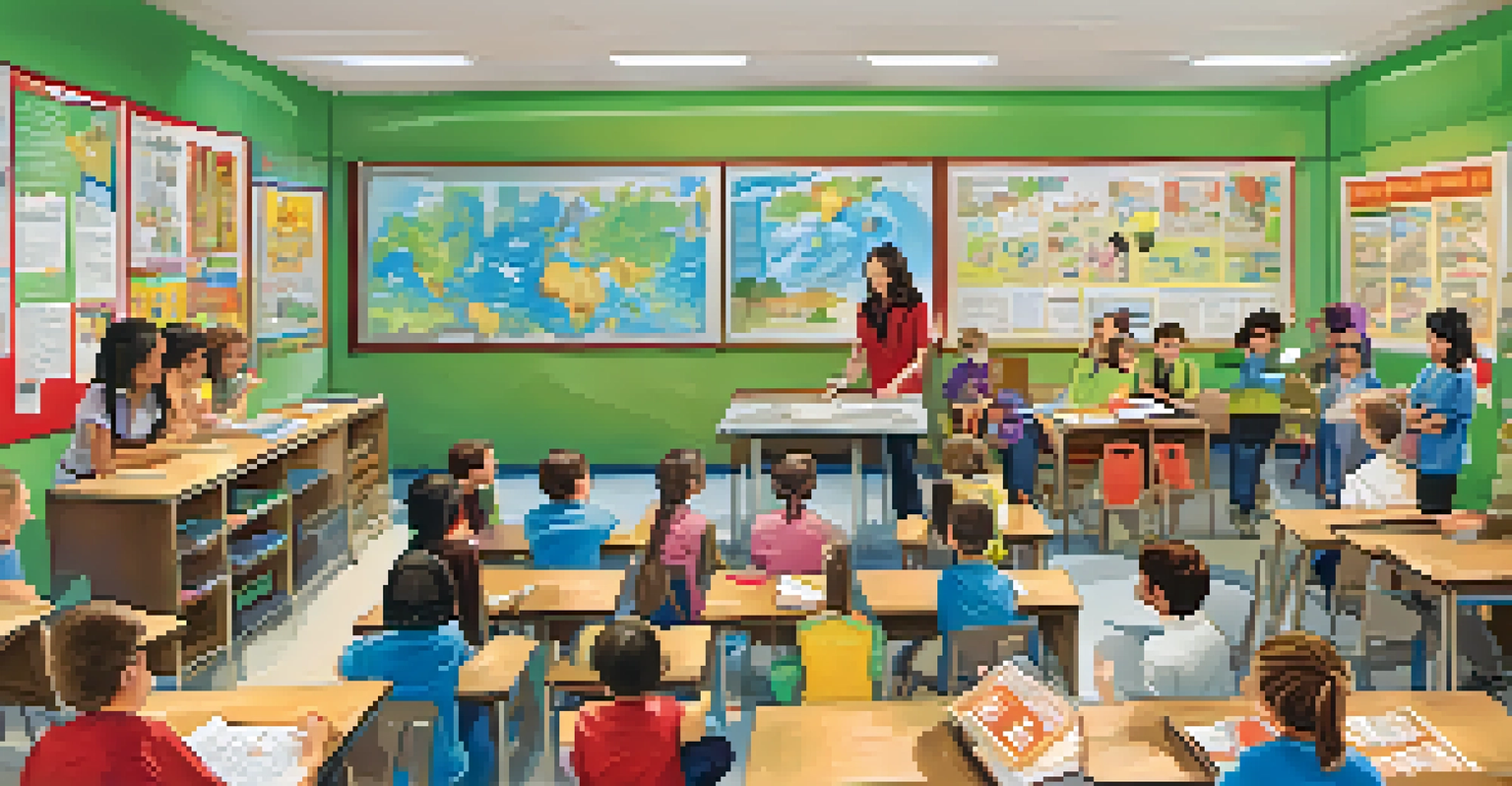Public Awareness Campaigns for Disaster Preparedness in Houston

Understanding the Need for Disaster Preparedness
Houston, known for its vibrant culture and economy, faces unique challenges due to its geographical location. The city is prone to hurricanes, flooding, and other natural disasters, making preparedness essential for its residents. Without proper awareness, communities can be caught off guard, leading to devastating consequences.
By failing to prepare, you are preparing to fail.
Disaster preparedness is not just about having supplies; it’s about understanding risks and knowing how to respond. Public awareness campaigns play a pivotal role in educating residents about these risks and the importance of being ready. They transform the concept of disaster preparedness from an abstract idea into a practical reality.
By fostering a culture of preparedness, these campaigns not only aim to save lives but also to reduce the economic impact of disasters. When people know what to do before, during, and after an event, they can respond more effectively, minimizing chaos and confusion.
Key Organizations Driving Awareness in Houston
Several organizations are dedicated to boosting disaster preparedness in Houston. The Houston Office of Emergency Management, for instance, leads initiatives to inform the public about risks and safety measures. Their campaigns often include workshops, informational sessions, and community outreach programs.

Non-profits and local businesses also play a crucial role in these efforts. They sponsor events, distribute resources, and engage with the community to ensure that everyone has access to vital information. Collaboration among these organizations amplifies the message and reaches diverse populations across the city.
Hurricane Preparedness is Crucial
Houston's geographical challenges necessitate a strong culture of disaster preparedness to mitigate risks and protect residents.
Additionally, partnerships with schools and universities help educate younger generations about disaster preparedness. By integrating these lessons into educational curricula, the knowledge of how to stay safe becomes ingrained in the community from an early age.
Effective Strategies for Public Awareness Campaigns
Successful public awareness campaigns utilize a mix of strategies to engage the community. Social media platforms have emerged as powerful tools for spreading information quickly and effectively. Campaigns often leverage these platforms to share tips, resources, and real-time updates during emergencies.
The best way to predict the future is to create it.
In-person events, such as community fairs and workshops, also play a significant role in raising awareness. These gatherings provide opportunities for residents to ask questions, get hands-on experience with emergency supplies, and learn from experts. The personal interaction fosters a sense of community and responsibility.
Visual aids, such as infographics and videos, help simplify complex information. By presenting disaster preparedness tips in an easily digestible format, campaigns can capture the attention of those who might otherwise overlook important information.
Engaging the Community Through Social Media
Social media has revolutionized the way disaster preparedness campaigns engage with the public. Platforms like Facebook, Twitter, and Instagram allow organizations to reach a wide audience instantly. Through creative posts and engaging content, they can raise awareness and encourage proactive behaviors.
User-generated content also plays a role, as residents share their preparedness stories and tips online. This grassroots approach not only personalizes the message but helps create a community of shared experiences. When people see their neighbors getting involved, they are more likely to participate themselves.
Community Engagement Enhances Readiness
Effective disaster preparedness relies on collaboration between organizations, schools, and the community to raise awareness and share vital information.
Furthermore, social media campaigns can be tailored to specific events or seasons, such as hurricane preparedness during the summer months. By focusing on timely topics, organizations can ensure that the information is relevant and actionable for the community.
The Role of Schools in Disaster Preparedness
Schools are integral to fostering a culture of preparedness in Houston. By incorporating disaster preparedness training into their curricula, educators can equip students with the knowledge they need to respond effectively in emergencies. This proactive approach ensures that children are not only informed but also feel empowered to take action.
Parent-teacher associations often collaborate with local emergency management offices to organize drills and workshops. These events serve as valuable opportunities for families to learn together, reinforcing the importance of preparedness at home. When parents are involved, the lessons extend beyond the classroom.
Additionally, educational materials can be distributed through schools, making it easier for families to access critical information. By targeting this community hub, campaigns can effectively reach a diverse audience and instill a sense of responsibility among students and their families.
Community Drills and Simulations
Community drills and simulations are vital components of disaster preparedness campaigns. These events allow residents to practice their emergency response skills in a controlled environment. By simulating real-life situations, participants can identify gaps in their preparedness and learn how to improve.
These drills not only enhance individual readiness but also strengthen community bonds. When neighbors come together to prepare for potential disasters, they build trust and a sense of unity. This collective effort can make a significant difference during an actual emergency.
Continuous Improvement is Key
Evaluating the impact of awareness campaigns ensures that strategies evolve to meet the changing needs of Houston's residents.
Moreover, community drills often involve local emergency services, providing residents with insights into how these professionals respond during crises. This collaboration fosters a deeper understanding of the roles various organizations play, ensuring that everyone knows where to turn for help when needed.
Evaluating the Impact of Awareness Campaigns
Measuring the effectiveness of disaster preparedness campaigns is crucial for continuous improvement. Organizations often survey residents to gauge their awareness and preparedness levels before and after campaigns. This data helps identify what works and what areas need more focus.
Feedback from the community is invaluable. It not only highlights successful strategies but also uncovers gaps in knowledge that need addressing. By listening to residents, organizations can tailor future campaigns to better meet the needs of the community.

Ultimately, the goal is to create a resilient population that can withstand disasters with confidence. Through ongoing evaluation and adaptation, awareness campaigns can continue to evolve and effectively prepare Houston residents for whatever challenges lie ahead.